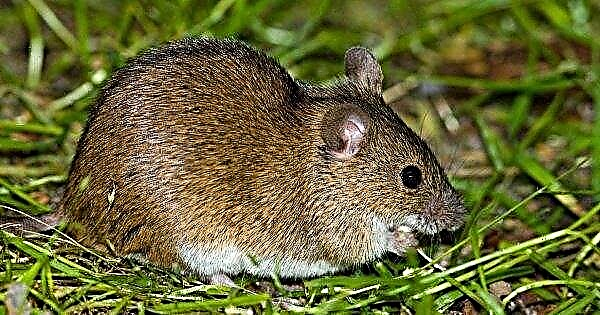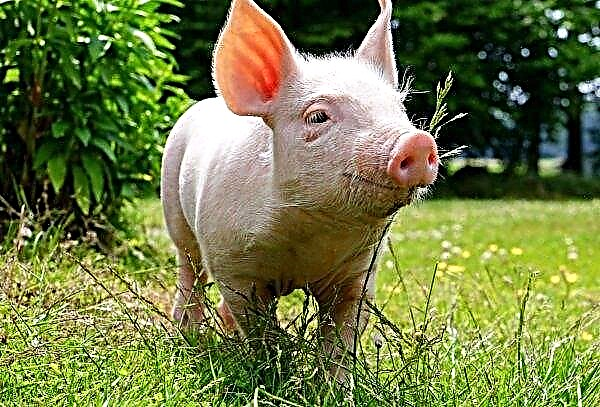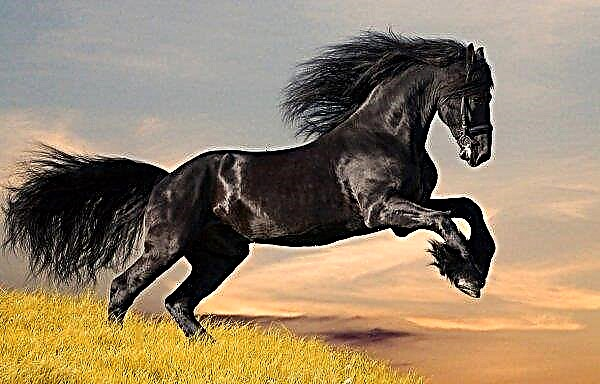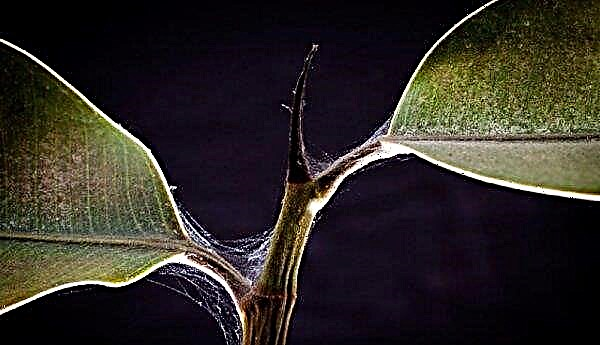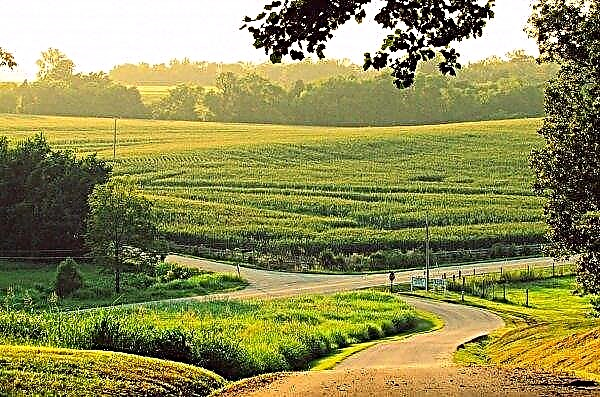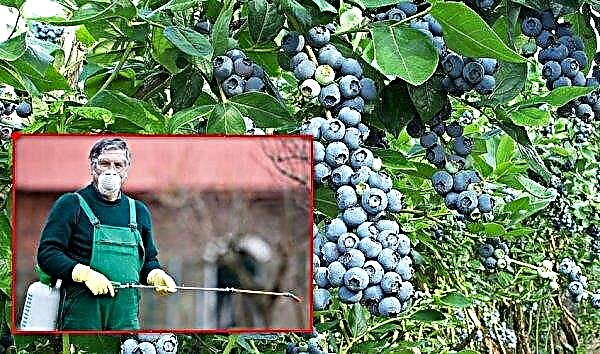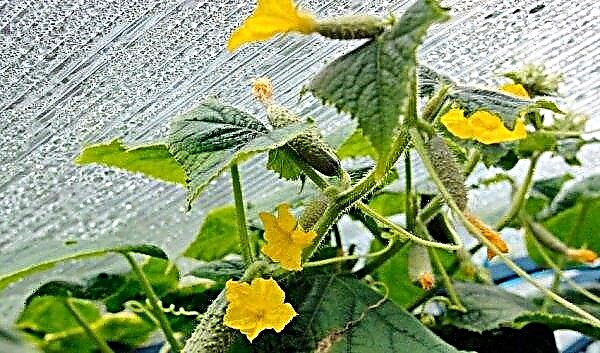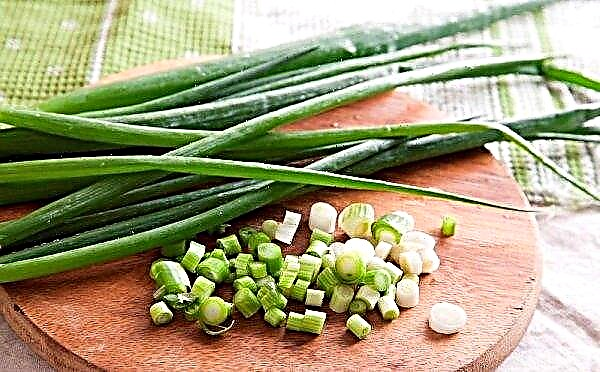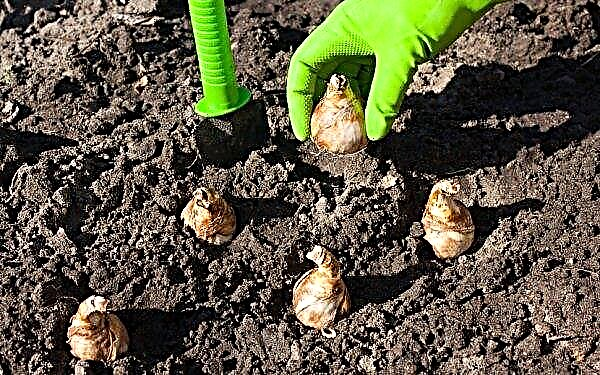If you need an effective vertical for landscape compositions, and at the same time unpretentious in leaving, then one of the best options can become a juniper of Suecika variety. Garden forms of this beautiful plant vary greatly - from very narrow strings to columns with a diameter of 1 m. This article will familiarize you with the description of this variety, agricultural farming techniques, and care requirements. In addition, you will learn about various ideas for applying this culture in landscape design.
Botanical Description
Common juniper Suezika (Juniperus communis Suecica) - an evergreen coniferous plant, originally from Scandinavia. The culture is a slender medium-sized multi-stemmed shrub. The variety grows relatively quickly - in a year it grows in length by 15–20 cm and in width by 5 cm. At 10, it reaches a height of 2–2.5 m and a diameter of 0.8 m. Height of an adult plant (25–30 years) - up to 3-4 m, and the diameter of the crown - 1.2-1.5 m.

The crown of the bush has a columnar shape. Bark of gray-brown color. The shoots are straight, reddish, densely arranged and directed vertically. The tips of the shoots droop a little. Needle needles, 0.8–1 cm long, with a wax coating, light green or bluish-green. The prickly needles are prickly.
Variety Characteristics
The common juniper juniper Suecika is characterized by the following varietal characteristics:
- height up to 3-4 m;
- crown shape in the form of a narrow vertical column;
- good frost resistance (climate zone 3);
- relatively fast growth rate;
- green-blue or gray-green color of needles.
Use in landscape design
Juniper Suecika is widely used in landscape design and will look elegant and rich both in a single landing on the lawn and in groups. The species safely tolerates pruning, which allows it to be used in creating a variety of topiary colonized garden compositions.
The evergreen shrub looks great in rocky parks, gardens and rock gardens. Occupying a tiny area, it provides the opportunity to create beautiful compact compositions of dwarf conifers right next to the blind area of the house wall, gazebo, barbecue, pool, bathhouse, back wall of an alpine hill.
Juniper is able to green even a small house area of 5 acres. At the same time, the healing aroma of needles will be felt in the house. The variety is often used for prickly hedges and low, ordinary plantings along the curbs of paved paths. Can be found as a garden bonsai.

Landing and further care
The best time for planting juniper in open ground is early spring. Moreover, there is no need to wait for warm weather - planting material can be rooted immediately after the snow melts.
The main requirement for the place of cultivation of the variety is the presence of full sun. In the shade, the crown becomes loose and spreading, but slight shading is still allowed. The presented culture is undemanding to the type of soil. It only responds poorly to compacted soil. The most favorable are loose, neutral soils with moderate humidity.
Important! Seedlings taken from natural conditions take root poorly, so use should be instances with a lump of earth. When buying a young bush in a container, carefully inspect the needles - the slightest signs of her illness should stop you from acquisitions.
Planting young Juniper Suecik should be done according to the following scheme:
- Form a pit 2-3 times the size of an earthen coma seedling.
- At the bottom, lay a drainage layer about 20 cm thick of sand or broken brick.
- Prepare a soil mixture of peat, sand and turf (in a ratio of 2: 1: 1).
- Gently lower the seedling rhizome into the recess. Fill the recess so that the root neck is not recessed.
- As a final step, moisten the area.

The first week after planting, the culture is abundantly watered. Frequent watering is also required in dry summers. The sprinkling procedure will also be useful for the juniper, since the plant does not tolerate dry air. It should be carried out with warm water. This method of irrigation allows you to remove dust from the needles and moisturize it.
Important! In case of group planting of juniper, the distance between planted plants should be from 0.5 to 2 m (depending on size).
Top dressing should be applied once a year (in spring, at the end of April or in May). Use nitroammofosku or means "Kemira universal". The young shrub additionally needs shallow cultivation. Regarding pruning, the procedure is recommended for sanitary purposes. Forming pruning is also possible, it is carried out according to the rules common for coniferous crops.

This variety is quite unpretentious and hardy, but a young bush should be covered with lapnik for the winter. An adult instance will be superfluous to sprinkle with a layer of peat (10 cm thick). Being a columnar view, Suetsika can suffer from heavy snowfalls, so in autumn, shoots must be pressed to the trunk and tied with a ribbon or rope.

As you can see, the common juniper of the Suecika variety is a valuable coniferous crop, notable for its high decorativeness and resistance to adverse environmental factors. Following the above recommendations of professionals, you will decorate your personal plot with this coniferous representative without unnecessary efforts.

